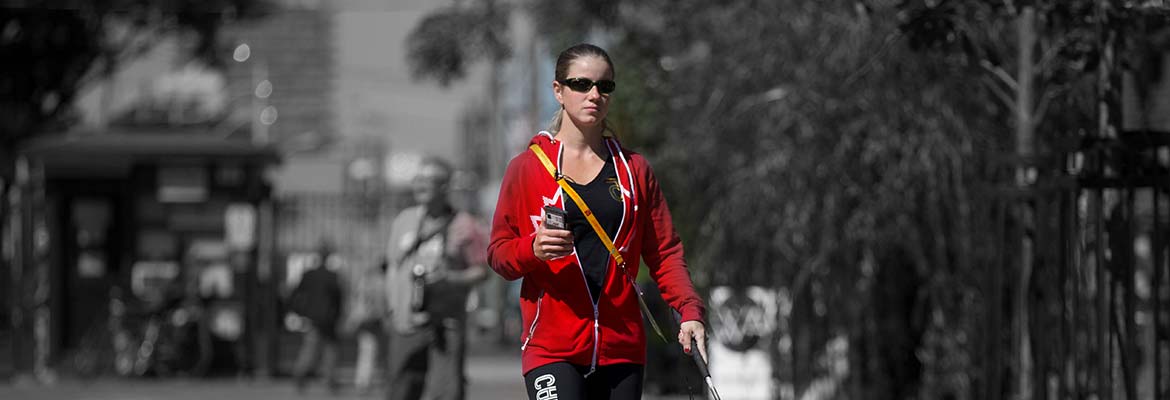You may not be aware that blind individuals use the same smartphones as sighted people unless you are blind or know someone who is. Many blind people, in fact, use touch-screen smartphones on a daily basis. The trick is that smartphones contain a screen reader, which allows blind individuals to operate their apps using a combination of gestures and touches, as well as vibrations or audible feedback.
Screen readers can be used on both desktop computers and mobile devices. The screen reader is normally found in the accessibility section of the settings menu. VoiceOver is the screen reader for iPhones. It gives a spoken description of what’s on the screen, including what buttons to click and what additional options the user has. A well-designed website or app user interface allows screen readers to access the information on the website or app, making it accessible to blind people. A screen reader, on the other hand, will make a poorly designed website or application invisible.
We are researchers that are interested in the design of technology that is accessible to persons with a variety of disabilities. We’ve discovered that more can be done to make technology more accessible and inclusive, such as upgrading design tools so that screen reader users can use them.
It’s not merely a question of equity and inclusion. Everyone benefits from technology that is easily accessible. Because it will take more time or effort, an app or website that causes problems for a screen reader will be more difficult to use than an accessible app or website for everyone.
Observing individuals is beneficial; however, having them participate is much better
Initially, user interface designers discovered that studying how individuals with various disabilities used touch screens was the greatest method to produce accessible technology. For example, early studies indicated that blind users found it difficult and time-consuming to locate small icons and specific digits on the on-screen keypad.
Accessibility researchers solved this by using the entire touch screen as an input and navigation control, comparable to a game console controller. Users can tap anywhere on the screen to respond to voice cues instead of needing to touch a specific portion of the screen. These findings would not have been attainable if blind individuals were not included in the evaluation and creation of touch screens.
Best practices in user interface design have always incorporated people in the design process. Incorporating disabled individuals leads to more accessible technologies. Many technologies, however, are still inaccessible to disabled users out of the box.
Having people with disabilities develop apps and websites is one method to make them more accessible. However, the design process is not easily accessible to those individuals. There are only a few tools in the user interface designer’s arsenal that are self-accessible. It’s a Catch-22 situation.
Accessible technology necessitates the use of accessible design tools
There has been little research into how accessible the user interface design process is, particularly for blind individuals. Prototyping software allows user interface designers to generate temporary mock-ups of user interface designs to present clients or test with users, according to our latest research. This software is quite helpful in the field. Balsamiq, Adobe XD, and UXPin are among examples.
The majority of popular prototype software is incompatible with screen readers, according to our research. As a result, blind designers who use screen readers are unable to use the prototyping program.
We used two popular screen readers, VoiceOver for MacOS and Narrator for Windows, alongside popular prototype software and documented when and where they gave us access to the various buttons and capabilities.
Although we discovered some compatibility, such as screen readers recognizing a button and indicating that it can be selected, other parts were less evident to screen reader users. For example, the prototyping program may not provide information to the screen reader that would show what a specific button performs, such as changing the font size of text. It may also make it difficult for the screen reader to focus on the button in order to pick it, which is required for the user to “click” the button.
Finally, the restricted access discovered throughout our investigation is severe enough that a blind designer would be unable to use the software to produce their own mock-ups.
A brighter future is within reach
Everyone is affected by the issue of accessibility. In most circumstances, providing access to technology is required by law. Organizations that failed to offer proper access in the past have been sued.
Accessibility, on the other hand, is a hallmark of smart technology. Many modern technologies, such as optical character recognition, which allows computers to read printed text, were developed in response to the needs of persons with disabilities.
It is critical to incorporate accessibility into the design process. While designers should be aware of how people with disabilities interact with technology, the most valuable insights may come from people with disabilities themselves. The benefits of having a piece of technology designed by people who actually use it can’t be replaced no matter how much empathy designers gain by examining user behavior and preferences.

